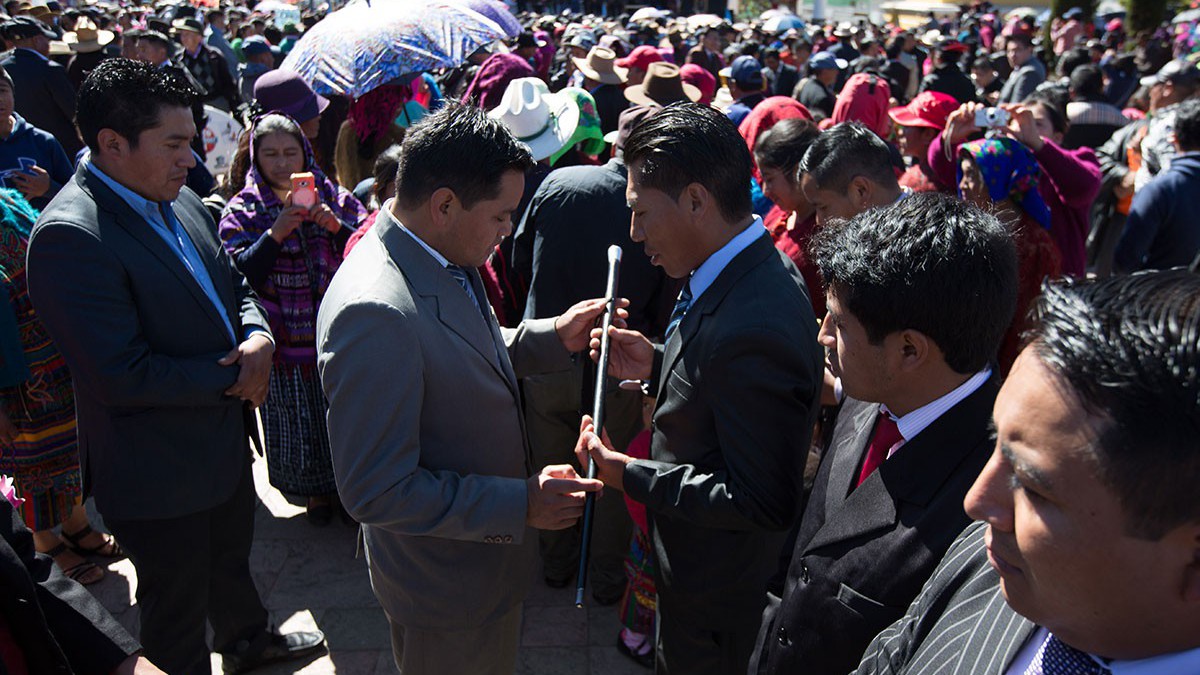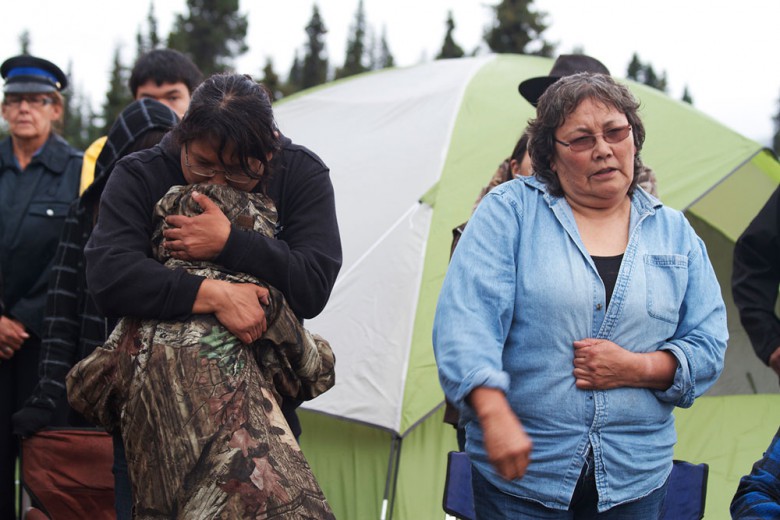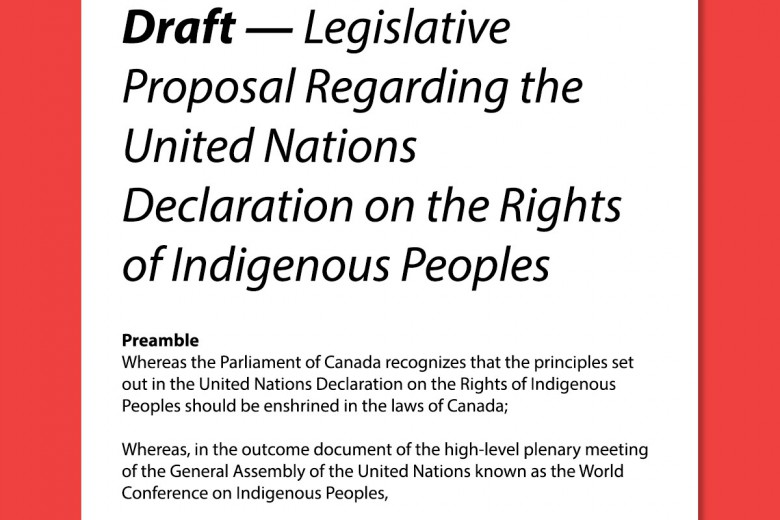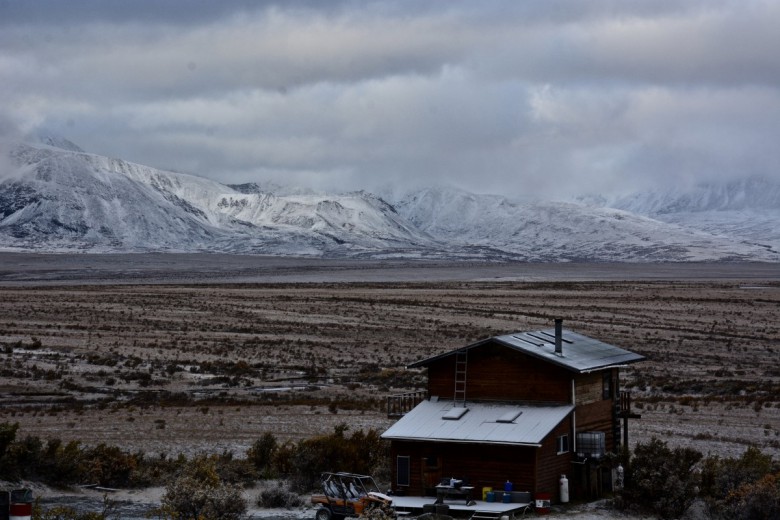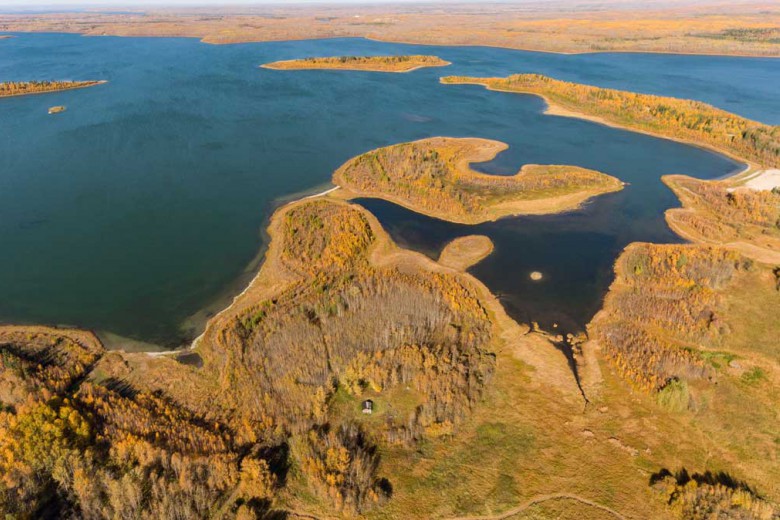The central plaza of the K’iche’ highland city of Totonicapán, Guatemala felt like a community celebration. Thousands gathered on January 1, 2020, to commemorate the changing of the community’s Indigenous ancestral authorities, the 48 Cantones. The hundreds of outgoing community representatives from each of the 48 self-governed communities, or cantones, that make up Totonicapán would pass the vara – a 76-centimetre-long staff that symbolizes authority within each Indigenous community – into the hands of the incoming authorities from their villages. Each group was led by a drum and a traditional flute, the chirimía.
Carrying the vara is not an easy task. It represents being at the service of the community 24 hours a day during the period of one’s mandate, which can last between one and four years, depending on the community. The work of ancestral authorities is to maintain social cohesion at a time when the spread of evangelical Christianity and capitalist social relations contribute to division within Indigenous communities. In addition, they play a critical role in defending communal resources within Indigenous territories.
Carrying the vara is not an easy task. It represents being at the service of the community 24 hours a day during the period of one’s mandate.
Each of the 48 communities of the city of Totonicapán has elected committees that oversee various aspects of communal life, including natural resources, historic documents, public security, and the administration of justice. The 48 communities are coordinated by a board whose president is elected each year by the mayors of the communities. The continuation of the 48 Cantones has meant the reproduction of traditional social organization even in the face of Spanish invasion, liberal reforms that stripped Indigenous groups of land, decades of war, and the current invasion of transnational capital.
As the vara changed hands in Totonicapán, similar events were occurring in hundreds of Indigenous communities across Guatemala. In the last two decades, propelled by the country’s 1995 Accord on the Identity and Rights of Indigenous Peoples, Indigenous communities throughout Guatemala have begun to recuperate their centuries-old forms of governance.
Communal alternatives to capitalism
“Each one functions in its own way,” reflective of the needs within their communities, Gladys Tzul Tzul, a K’iche’ Maya sociologist from Totonicapán, explained to me during a conversation in 2016 in a restaurant near Guatemala City’s historic centre. Tzul Tzul has dedicated her research to exploring the autonomous Indigenous governments in Guatemala.
“I have realized that my notion of [Indigenous authority] was based in the highlands of Guatemala, in Totonicapán. But when I went to work in Sololá I found another form of authority,” she recounted. “When I went to Nebaj, I found that the form of authority is crossed with the reconstruction [of the society] after the war.”
“The objective of the existence of the authority of the community is the exercising of the freedom of determination in front of the state,” José Santos Sapón, who served as the president of the 48 Cantones in 2013, told me while we sat in the offices of the Indigenous Municipality of Nebaj, Quiché, in December.
“The objective of the existence of the authority of the community is the exercising of the freedom of determination in front of the state.”
“Religion, education, the capitalist market, and the media are threats to the communal life,” Sapón explained. “For religion, there is no communal life since everyone will go to a place in heaven if you believe in God. You don’t need a life in a community. Education from the state socializes students to live in the way that they desire, which is not communal; the economic model induces individual pleasure, and not to have a communal life; and finally the media distracts and individualizes and isolates people from the community.”
War and its legacy
Guatemala’s population is comprised of Indigenous Peoples – the Xinka, the Garifuna, and the 22 different Maya peoples, along with Mestizos (those of mixed European and Indigenous heritage) – and Ladinos (those of European descent). The state has historically represented the interests of Ladinos, treating Indigenous people as cheap labour for the non-Indigenous landowners. But throughout the Spanish invasion, the ancestral authorities protected their autonomous systems of governance by purchasing titles for their land from the Spanish Crown and the subsequent emergent Guatemalan state.
In 1820, the K’iche’ residents of Totonicapán rose up against paying tributes to their Spanish colonizers. Following the uprising, the leaders bought communal land title deeds for 22,000 hectares of forest. Nearly 200 years later, the communal forests remain the basis of social organization. The representatives of the 48 Cantones monitor the forests, guaranteeing that families seek consent from community leaders before logging trees. Community members have the right to collect firewood from fallen trees or branches for personal use, though they are not permitted to sell the firewood they collect. As a result, according to Guatemala’s Ministry for the Environment and Natural Resources, Totonicapán has the lowest deforestation rate in the country.
“The 22,000 hectares of forest is what maintains us [as] united, and what maintains us at attention and working,” Pedro Barreno, the 26-year-old outgoing president of the 48 Cantones’ Natural Resources Council, explained to me as we stood on January 1, watching each Canton arrive. “The communal forest is where the majority of potable water comes from, and this is what the communities consume. Water is vital for life.”
“The 22,000 hectares of forest is what maintains us [as] united, and what maintains us at attention and working.”
Indigenous communities faced their gravest violence and dispossession during the country’s 36-year-long internal armed conflict between leftist insurgents and the Guatemalan state, from 1960 to 1996. The war killed 200,000 people, disappeared another 40,000, and displaced over one million people. After the end of the war, it was determined by a truth commission that 83 per cent of civilian victims of the war were Mayan. The UN-backed commission concluded that the military was responsible for 93 per cent of massacres and that these attacks against Indigenous communities amounted to genocide. While the communities in Totonicapán did not face the dispossession of their communal lands, others, like the Ixil Mayans, did.
The peace accords and constitutional reforms that followed the war allowed communities to revive their ancestral forms of governance and to mount legal defences of their territory. The 1995 Accord on the Identity and Rights of Indigenous Peoples allowed Indigenous communities to practise their traditional forms of social organization. The Indigenous communities also gained formal recognition of their communal territory through Article 67 of the Guatemalan Constitution, which declares that communal lands will be protected and remain under the management of ancestral authorities. But the same accords also ushered in neoliberal structural reforms that opened the door to investments from transnational companies looking to exploit water, minerals, and forests.
Municipalities versus ancestral authorities
“All of this is the communal lands,” Santos Alvarado tells me over his shoulder as he drives his motorcycle to the offices of the ancestral authorities of Chuarrancho, an hour or so from the country’s chaotic capital city. He motions toward the simple cement-block buildings that line the main road through the Indigenous town. He explains that each person has a right to their home, but they aren’t the owners of the land.
Alvarado is the 33-year-old legal representative for the Chuarrancho ancestral authorities. He was born and raised in the small municipality of Chuarrancho, home to roughly 10,000 people – the majority of whom are Kaqchikel Maya.
The original Kaqchikel residents obtained title for the roughly 3,856 hectares of land that made up the plantation, called Finca 339, in the late 1800s, registering the land in the name of the community. But over the centuries, these communal lands were slowly eroded through the expansion of private landholdings.
The Kaqchikel ancestral authorities’ power was stripped by the 1983 establishment of the Supreme Electoral Tribunal, which placed more power in the hands of municipal mayors across the country. In 2001, after the war, the lands were ceded into the name of the municipality.
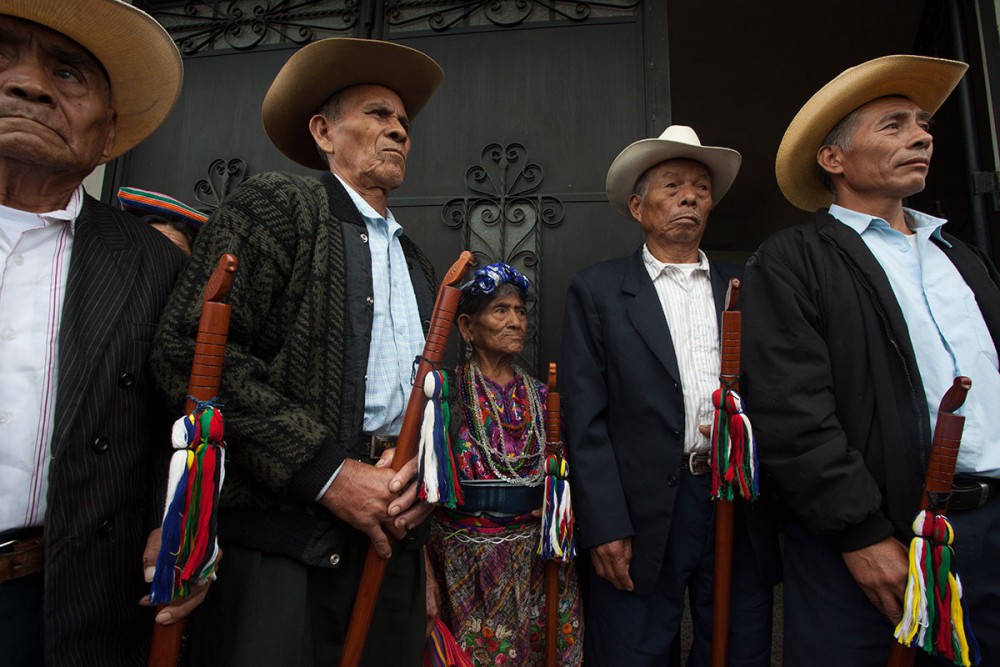
“The municipality usurped our communal lands,” explains Alvarado, while we sat in the sparsely furnished offices of the Chuarrancho ancestral authorities. “The land passed from the name of the Indigenous community to the name of the municipality. When the land passed to the name of the municipality, it permitted the municipality to grant licences for mining and energy production.”
The community only found out that their lands were under the control of the municipality when transnational companies began to arrive to exploit hydro and mineral resources. Faced with the potential dispossession of their land, in 2009 the residents of Chuarrancho voted in a referendum against the construction of a hydroelectric dam on the Motagua River. The referendum was held in accordance with the International Labour Organization’s Convention 169, which orders that companies must consult with Indigenous Peoples prior to the establishment of private projects within their territory. Guatemala signed the convention in 1996, and since then, over 80 consultations have been held in the country. The majority of the Indigenous communities that have participated in the referendums across Guatemala, including in Chuarrancho, have rejected all extractive projects within their territories.
The newly organized Chuarrancho ancestral authorities filed an injunction in 2013 in the Guatemalan courts against the municipality for the theft of their lands. As the court case advanced, Alvarado tells me that the municipality spread stories in the national media calling into question the legitimacy of the ancestral authorities, but scholars and lawyers working with the ancestral authorities managed to prove their long history within the town.
The majority of the Indigenous communities that have participated in the referendums across Guatemala have rejected all extractive projects within their territories.
In 2014, the Constitutional Court decided in favour of the ancestral authorities, returning the 3,856 hectares of land to the community. Since the ruling, residents have begun to turn to the ancestral leaders to help resolve conflicts, seek advice, and register land. But the ancestral authorities continued to face issues with the municipality, which argued that they do not have legitimate power to solve disputes, crimes, or conflicts, and has attempted to block the transfer of land.
After years of the municipality dragging its feet in returning their communal lands, in 2016 the ancestral authorities filed another injunction against the municipality for its failure to recognize their jurisdiction. Once again the Constitutional Court ruled in favour of the Indigenous leaders. This time, the decision applied not just to the ancestral authorities in Chuarrancho, but to ancestral authorities across the country. For the first time, ancestral bodies were recognized as legitimate governments within their towns.
Building a legal basis for Indigenous self-determination
It is 9 a.m. in the highland town of Nebaj on a Friday. The Ixil Maya town has been active since sunrise, and the office of the Indigenous Municipality – a variation of the term “ancestral authority” – opened its doors to attend to residents early that morning. Four or five people wait in the salon as the authorities gather in a small room to hear from residents on a number of conflicts.
SitPo’p Herrera sits at a table with three other members of the ancestral authorities of Nebaj. The first case they are set to hear is a conflict over a tuk-tuk, the small three-wheeled vehicles used as local taxis.
“More than anything, the ancestral authorities are there to maintain peace and harmony within the community,” Herrera, a 29-year-old Ixil Mayan woman from the village of Tzalbal in the municipality of Nebaj, told me in December.
“When I received my vara, I was told ‘You must care for the natural resources. You will not sell them, you will not allow them to be sold. These are for the community.’”
Herrera has been helping recuperate Nebaj’s ancestral authorities since 2013. In 2016, she was approached to serve a four-year term as an authority, but she was one of those who initially rejected the call to receive the vara because she did not feel qualified to carry it. After talking with her father, though, she accepted. She is the first woman appointed to serve the community while unmarried and without children.
“Our ancestors protected the elements of the mother earth – the water, the forests, the land, the air – so that we would have them and so that future generations have them,” Herrera told me. “When I received my vara, I was told ‘You must care for the natural resources. You will not sell them, you will not allow them to be sold. These are for the community.’”
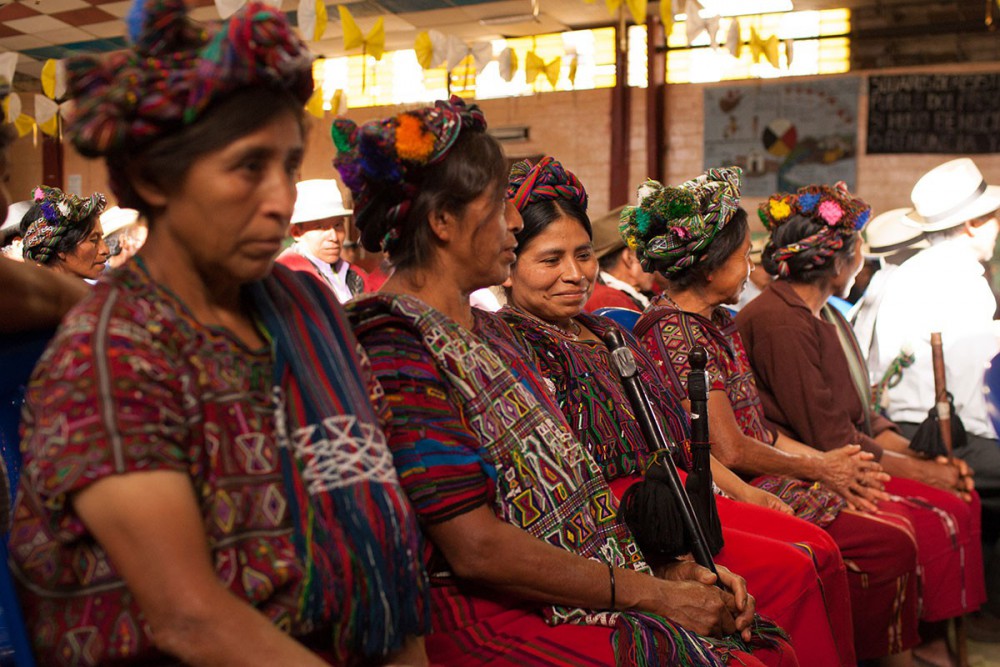
During Guatemala’s civil war, the Guatemalan military sought to destroy Indigenous social organization with the help of U.S. intelligence, training, and political support. A declassified cable sent in 1982 from the United States’ Central Intelligence Agency, which assisted the Guatemalan military, stated that it was a “well documented belief” that the Guatemalan military considered the entire Ixil Maya population to be supporters of the guerrillas. Among those targeted and killed as part of the military’s scorched-earth efforts during the conflict were the ancestral authorities. The same period saw the strengthening of the municipalities and political parties across the country.
But since 2008, the Ixil communities of Nebaj, Chajul, and Cotzal have been recuperating the Indigenous Municipalities within their communities. The Ixil territory of the highlands was among the hardest hit during the war, and in 2013, the Guatemalan courts declared that the administration of dictator Efraín Ríos Montt had committed acts of genocide against the Ixil people, though the decision was quickly overturned. Ixil community leaders have continued to work to gain recognition of the genocide.
During Guatemala’s civil war, the Guatemalan military sought to destroy Indigenous social organization with the help of U.S. intelligence, training, and political support.
“The struggle for the land has been a constant struggle for the Ixil people, especially for our ancestors. We continue this struggle, but more debilitated and more attacked,” Miguel de León Ceto, one of the Indigenous mayors of Nebaj, told me as we sat in the offices of the Indigenous Municipality.
Among the focal points of this defence are the different titles for Nebaj’s two large landholdings, which are known as fincas and are registered as communal.
Everyone in the Ixil community owns this land, but they cannot sell it or privatize it. Members of the Ixil communities are permitted to use the communal resources – including the forests, water, and land. But they have faced problems with the national land registry, which has issued other titles on top of the communal titles of the two fincas.
“During the war, the government took away 120 hectares in the name of development,” explains de León Ceto. “Today the same government is issuing titles on top of the titles that we have. They are provoking disorder and judicial insecurity over our lands.”
The Ixil ancestral authorities have requested that these other titles be annulled.
“Today the same government is issuing titles on top of the titles that we have. They are provoking disorder and judicial insecurity over our lands.”
The other threat to the communal resources of the Ixil communities is the construction of hydroelectric projects within the territory, as Guatemala pushes to expand its energy production by 2027. Companies such as Italian energy giant Enel, which began construction on the Palo Viejo hydroelectric plant in the Cotzal river in 2005, have done little for the Ixil communities except restrict their access to water and generate intense social conflict.
When hydro projects threatened to restrict communal access to water through the damming of the Xacbal River and transformation of its banks, the ancestral authorities launched a legal challenge in Guatemala’s highest court against projects within the municipality of Nebaj. On September 10, 2015, the Guatemalan Constitutional Court ordered the suspension of two projects – Vega I and II, which are owned by the Spanish firm Hidroxil, SA – until the Ixil population was consulted.
While the ancestral authorities had hoped for a referendum organized without the state, the decision did open the door for a public referendum on the project. But four years later, the Guatemalan government has yet to hold the referendum.
“We began the process in 2016. We were in discussions with the government [of Jimmy Morales] about how we wanted to go about the process of the consultation, but regrettably the government disappeared,” de León Ceto explained. “After 18 months, the government reappeared, requesting that we begin the process again. Being respectful of the judicial process and of the law, we as ancestral authorities accepted. Since then, the government hasn’t said a word. There is a complete lack of respect on the part of the government.”
The community is still waiting for the state to return to the negotiation process to establish the norms for the referendum after the change of government in January 2020.
A pan-Mayan movement
October 4, 2012, marked an important date for the ancestral authorities of Guatemala. That day, the Guatemalan military massacred eight Indigenous people along the Pan-American Highway in Totonicapán during a protest against education reforms and the high cost of energy. Outrage followed the massacre, but it also led to the organization of a pan-Mayan movement of ancestral authorities.
Following the massacre, representatives from the traditional bodies formed a national council that has since met weekly to discuss issues that their communities face. The organization of the various ancestral authorities led to the proposal of Article 203 of a reform package that was brought to the Guatemalan Congress in November 2016 for debate. Article 203 would have allowed for the formation of a plurinational state, in which the Indigenous authorities would be able to administer justice within their communities.
One of the key aspects of the reform stipulated that none of Guatemala’s judicial bodies, save the Constitutional Court, could contradict or revise the decisions of the Indigenous authorities. The Indigenous authorities could, in turn, revise the decision of the country’s highest court.
The proposed reform was eventually retracted by ancestral authorities following an outburst of extreme racism from Guatemala’s economic elite and conservative forces, who took to opinion columns in the national newspapers to attack the initiative, suggesting that it weakened the country’s judicial system. While the decision to retract the reform was difficult, the authorities feared sowing more division in the country. This has not deterred the various communities from continuing their powerful work to recuperate ancestral forms of governance.
The proposed reform was eventually retracted by ancestral authorities following an outburst of extreme racism from Guatemala’s economic elite and conservative forces.
Back in Totonicapán, Barreno walked onto the plaza’s stage to hand off the vara to his successor, Rene García. Both placed their hands on the symbol of authority, and the mandate was passed on to another for 2020–21. García pledged to continue the work that so many others have shouldered for centuries.
“This is a grand responsibility,” García told me. “My work is to continue to work for the recuperation of our resources, because they are the basis of us as human beings. If there are no forests or other resources, there is no human life.”


